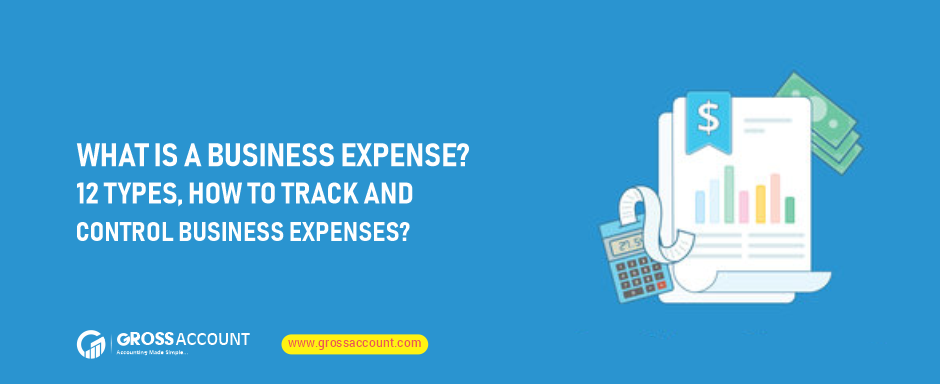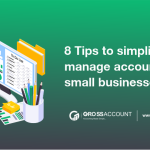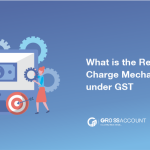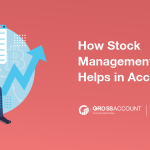What is a Business Expense?
Business expenses are ordinary costs incurred throughout their working hours. This expense is objectively measured on their earnings. And it is ultimately deducted from their net revenues as a business expense.
Organizations can spend or invest their money at the end of each month to pay taxes, banking fees, utilities, insurance premiums, maintenance, repairing, mortgage interest, etc.
Companies must maintain and control these costs to increase revenue. Organizations can boost their profitability by controlling expenses. They need to monitor the costs to control them, which is why they use accounting software to track their expenses.
12 types of businesses expense
The earnings of a company are determined by its expenses. Companies benefit if their expenses are lower than their sales ratio. However, if they calculate and find more expenses than sales, they will never make a profit. And the primary goal of businesses is to make money. As a result, businesses must be aware of costs such as,
1. Wages & Salaries
Every company’s team is vital for the company in today’s competitive market. And enterprises must pay their employees a salary following their work. If a worker or employee is hired on a contract basis, whether permanent or temporary, they must be paid the amount of money they make from their sales.
As a result, employers and workers are carefully chosen by businesses. Additionally, recruiting skillful employees who complete their tasks helps businesses in increasing their sales ratio.
2. Rental cost
Typically, businesses may rent a location to accommodate their employees or manufacture their products. As a result, they must pay the owners monthly or yearly rent. The cost of the rental is also included in the expenses.
Startup enterprises will often decide to invest in land at the same time. That is why they take out a loan from a reputable company and invest in property. This investment is referred to as a mortgage cost, which is deducted as an expense from the profit.
3. Machinery
Machinery is critical for any business, whether it is a leading IT company or a startup manufacturing sector. Technology has streamlined the process nowadays. As a result, to keep up, they must implement machinery to lower their workload.
For this, business owners may purchase new machinery or pay rent to use old machinery. This is a cost that is deducted from the company’s net profit.
4. Training expense
Employees will require a demonstration or training to use any new machinery or software which is implemented. Businesses organized a training section for which they must pay a charge to experts or trainers. This is a type of expense, however, in today’s environment, organizations must provide training to their employees to keep up with the changes. As a result of this training part, employees’ skills will improve, and businesses will be able to increase their productivity.
5. Office Utility and Office Supplies
Businesses must spend money to provide a neat and clean work atmosphere with all necessary equipment, such as pens, pencils, computers, and papers.
They must also pay their monthly electricity, internet, and water bills, among other things. All of this is known as an expense, and it is deducted from the company’s income.
6. Business Insurance
Businesses need to secure their property from undefined accidents. As a result, they spend their money on insurance. That is why they must pay the premium every month. Premium costs are classified as business expenses.
7. Marketing and Advertising
Organizations spend money on marketing and advertising their products to increase market awareness. And this investment is known as a cost, which is deducted from profits.
To optimize earnings while growing sales, marketing, and advertising are essential. Because the organization can reach out to a large number of new customers by advertising their products or services.
8. Delivery & Freight Expenses
Free delivery services are provided by the company to maintain relationships with existing customers and attract several new customers. To reduce business expenses, the accountant of the company might deduct delivery and freight expenses from the income.
9. Repairs and Maintenance
It doesn’t matter what equipment is installed in the plant because it’s all a machine. And the organization can continue to maintain them for a long time. Sometimes machinery fails unexpectedly, and the organization must complete the order within the specified time. As a result, they must fix the machinery as soon as possible.
This repairing and maintenance cost is classified as a business expense, and it is deducted from the sales revenue.
10. COGS (Cost Of Good Sold)
The money was spent on raw materials and machinery in the manufacturing industry. After the products are manufactured, corporations must spend a small amount of money on things like storage rent, transport costs (such as traffic charges, payment to delivery boys, and so on), packaging, etc.
This is a small amount, but it is considered as the cost of goods sold (COGS), and it is deducted from the profits that companies make from selling their products.
11. Gift. Dining & Entertainment
Employees must continue to be encouraged by their employers. So that an organization can motivate employees by encouraging them and offering a comfortable working atmosphere. Employees who are motivated can focus on their work and assist their employers in increasing sales.
Allocating gifts and arranging better, more organized events promptly relax employees. However, organizations must pay for this cost as an expense.
12. Taxes
If you manage a business in the commercial market, you are well aware of the various taxes. This tax organization must be paid from their income and while paying their taxes. As a result, to calculate their net income, this amount is deducted from their profits.
How to track your business expenses?
When the companies want to increase their revenue, they must keep track of their expenses. To achieve success, they must reduce their costs.
Accounting software is now used by organizations to maintain track of the overall transaction. Purchasing raw materials, paying the premium, allocating salaries, investing in machinery repair, etc.
All of the information is saved in a single accounting system. As a result, at the end of the month, they will be able to analyze all of their transactions and, as a result, they will be able to minimize the unnecessary expenses. This strategy helps businesses in increasing their net profits.
You can use gross accounting software to keep all of your data safe and secure. It also Business expensesgenerates all of your cost data detail reports automatically. While analyzing this report, the organization can reduce expenses that aren’t necessary.
How to control or reduce your business expenses?
Here are some tips or points to consider to apply in real life to help businesses reduce their operational expenses.
Apply paperless technologies
There are several invoice software or billing software solutions available on the market today. Businesses can save money on stationery by utilizing this software. Additionally, by utilizing software, a business can move into the digital world.
Keep an eye on expenses
Keep an eye on your expenses as well. This strategy helps businesses in lowering costs and increasing profits. They will achieve their desired goal while lowering costs.
Purchase Bulk materials
Few businesses purchase the products in small quantities. However, they must modify the vendors’ offers. When analyzing the offer, they discover the advantages of purchasing in bulk, so they must purchase bulk materials. This approach can lead to significant savings.
Make a plan
In a competitive market, enterprises can minimize expenses with strategic planning. In addition, poor planning can lead to an increase in business costs. To increase revenues, you must plan properly and commit to your plan.
Conclusion
Businesses must deal with expenses, which can add up to a significant amount of money. Companies, on the other hand, face a loss if business expenses increase. That is why they used accounting software to keep track of their spending. This strategy helps businesses in maintaining their revenues while also allowing them to increase earnings with the right plan.
Contact Us and schedule a Free Demonstration.






